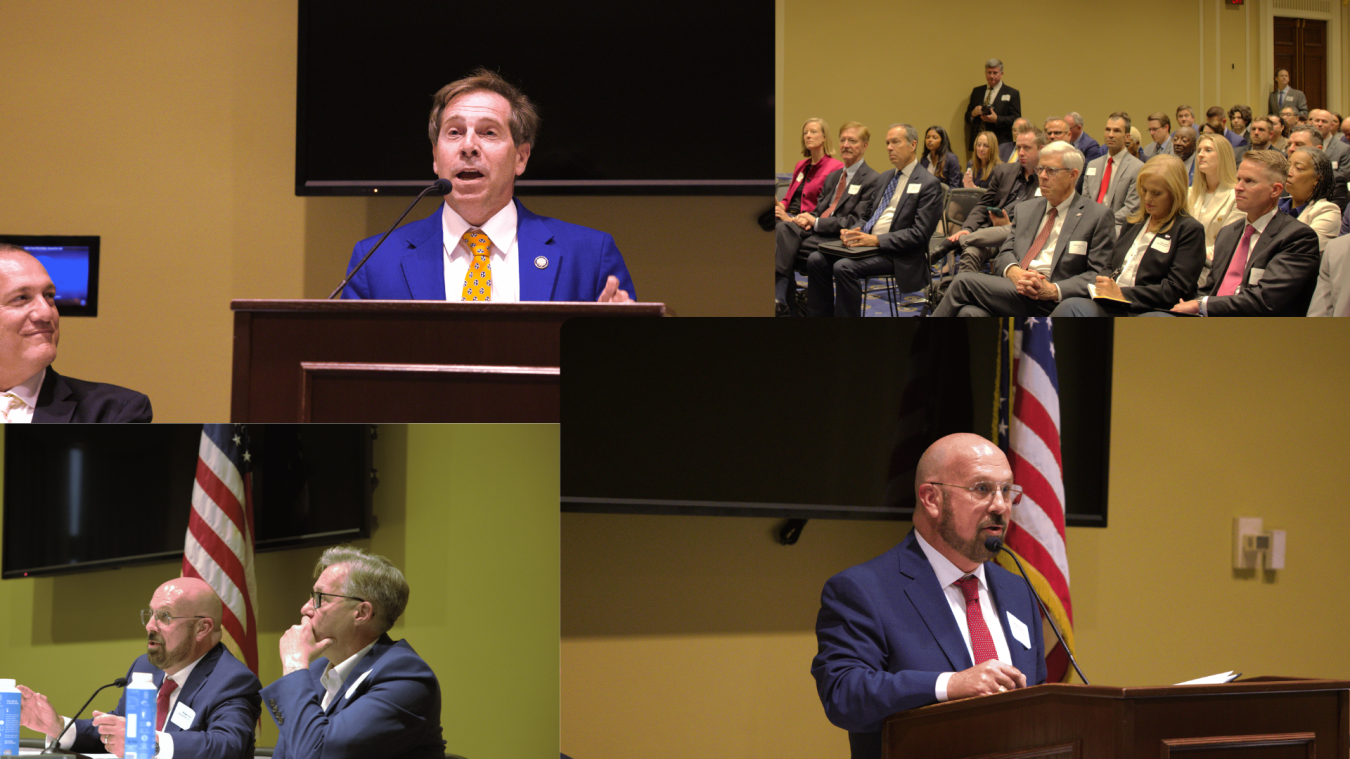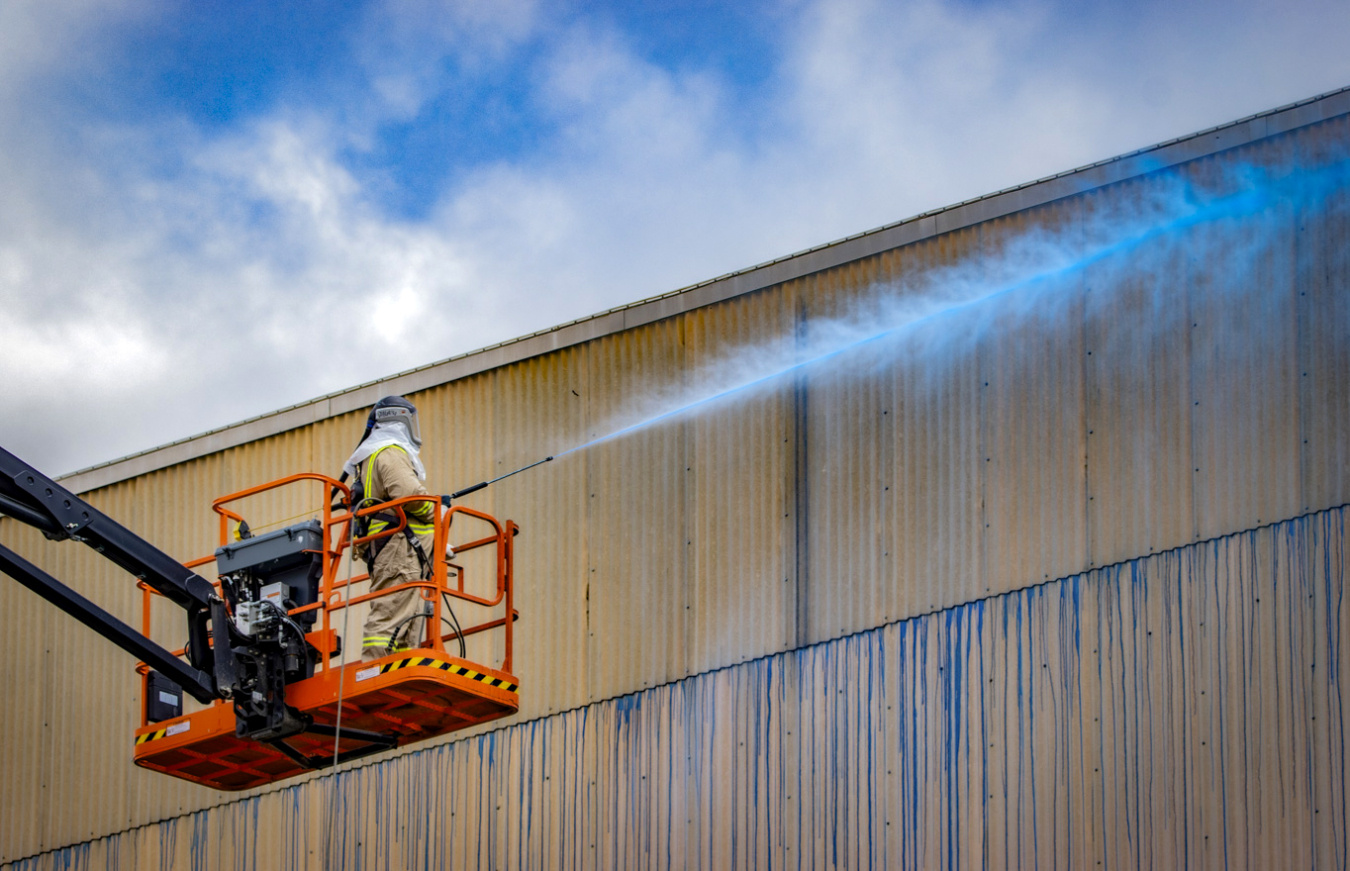Just six months into 2025, the U.S. Department of Energy Office of Environmental Management has racked up significant cleanup accomplishments across the country, with more progress on the horizon, senior EM federal and contractor executives said here last week. June 17, 2025.
Office of Environmental Management
June 17, 2025U.S. Department of Energy Office of Environmental Management (EM) leaders participated in a U.S. House Nuclear Cleanup Caucus event last week. Pictured at top left is U.S. Rep. Chuck Fleischmann of Tennessee; at bottom left are EM Principal Deputy Assistant Secretary Roger Jarrell, left, and Oak Ridge Office of Environmental Management Manager Erik Olds; and bottom right, Jarrell.
D&D achievements, tank waste cleanup progress among focal points
WASHINGTON, D.C. — Just six months into 2025, the U.S. Department of Energy Office of Environmental Management (EM) has racked up significant cleanup accomplishments across the country, with more progress on the horizon, senior EM federal and contractor executives said here last week.
“This is a cleanup community we can be proud of. At this point of the year, it is always a great time to look back and reflect. It’s a good time to take stock of what we’ve achieved and what we have to do,” EM Principal Deputy Assistant Secretary Roger Jarrell said during the second of three U.S. House Nuclear Cleanup Caucus events this year.
Operators use high-reach equipment to begin demolition on the high-bay area of the Alpha-2 building at the Y-12 National Security Complex. The high-bay area stands 80 feet tall, and its safe removal requires highly skilled and trained operators.
EM’s cleanup highlights so far this year include:
- Removing external panels from X-333, the second of three former uranium enrichment process buildings to be demolished at the Portsmouth Site later this year;
- Advancing demolition of the Alpha-2 former uranium enrichment facility at the Y-12 National Security Complex at Oak Ridge, marking the largest demolition project conducted at Y-12 to date;
- Finishing demolition of the Main Plant Process Building at the West Valley Demonstration Project, the last major facility there, on schedule and under budget;
- Completing the Test Bed Initiative at Hanford, successfully demonstrating the use of grout as a more cost-effective option to treat tank waste there;
- Completing construction and commissioning of the new Safety Significant Confinement Ventilation System at the Waste Isolation Pilot Plant (WIPP) ahead of schedule and under budget; and
- Obtaining approval from federal and state environmental regulators that waste has been successfully removed from two underground tanks at the Savannah River Site (SRS), moving them to the next stage of sampling and analysis as part of the closure process.
Demolition Specialist Jeff Howard sprays a blue fixative to the Portsmouth Site’s X-333 Process Building to maintain dust suppression on the transite panels.
“Overall, we're driving innovation with the potential to shave decades and billions off of some of our most challenging missions. The idea of completing something in 2082, 2086, maybe 2092, is no longer acceptable. So, we're changing the paradigm,” Jarrell said.
Jarrell was joined at the event by Erik Olds, manager of the Oak Ridge Office of Environmental Management; Tom Burns, president and program manager for Savannah River Mission Completion (SRMC), EM’s liquid waste contractor at SRS; and Ken Harrawood, president and project manager for Salado Isolation Mining Contractors, the management and operations contractor for WIPP.
The event was sponsored by three key EM stakeholder organizations — the Energy Facility Contractors Group, Energy, Technology and Environmental Business Association and Nuclear Energy Institute.
Digital Tools Have Potential to Help EM Run ‘More Like a Business’
Going forward, EM is working to identify and drive more innovative approaches to cleanup at its sites to operate the program “more like a business,” Jarrell said.
“Across the Department, Secretary of Energy Chris Wright is looking to all of us to work safely, work smarter and deliver more,” he said.
An approach with significant potential to help a variety of cleanup activities, according to federal and contractor executives, is the use of artificial intelligence (AI) and digital tools. Burns noted that SRMC is examining the use of digital tools to help optimize tank waste processing at the Salt Waste Processing Facility and Defense Waste Processing Facility at SRS.
“We really process every element in the periodic table,” Burns said. “We’re using very advanced data analytics tools to help tease out what combination of factors upstream and downstream help the plants run better, faster and cheaper.”
Another potential use of AI is to assist with training.
“We know that if you look at the demographics of our workforce, we do have, in some cases, an aging workforce. So, the question is, ‘What are the best practices around transferring knowledge that people have to the next workers that are coming in?’ So, let’s go to the teams that are working on those types of things and use AI and other types of technologies to do that,” Harrawood said.
At Oak Ridge, EM is interested in using digital tools to help enhance worker safety, Olds said. Site cleanup contractor UCOR has been piloting the use of a biometric system worn by workers to help remotely monitor them for potential heat exhaustion.
“Now we can actually see what’s happening with workers in real time and we can change the working conditions. That’s the kind of technology that I would like to see more of — things that get into the work that we're actually doing and become valuable tools and help us with the mission,” Olds said.
-Contributors: Jordan Anderson, Michael Nartker
To receive the latest news and updates about the Office of Environmental Management, submit your e-mail address.



